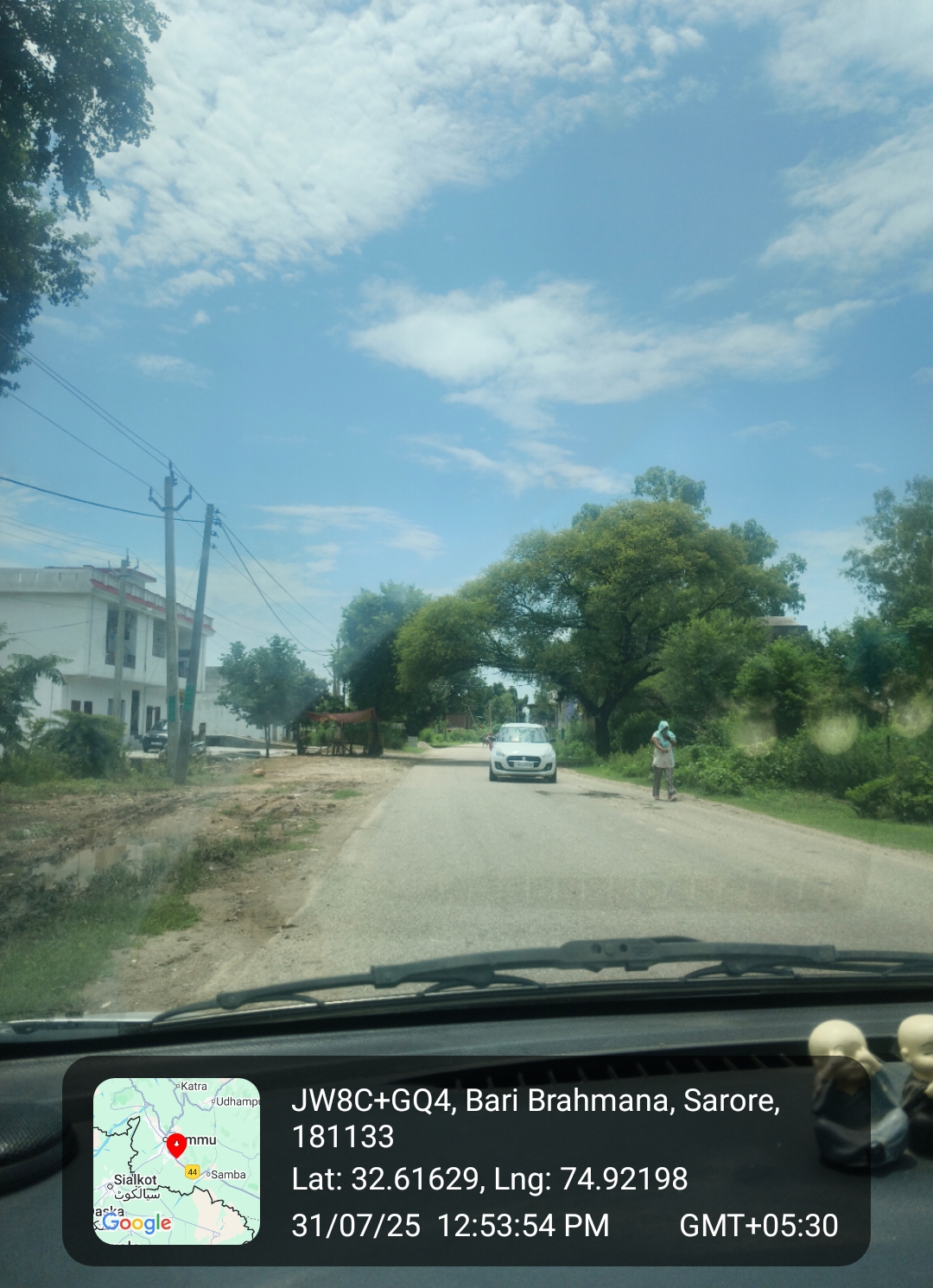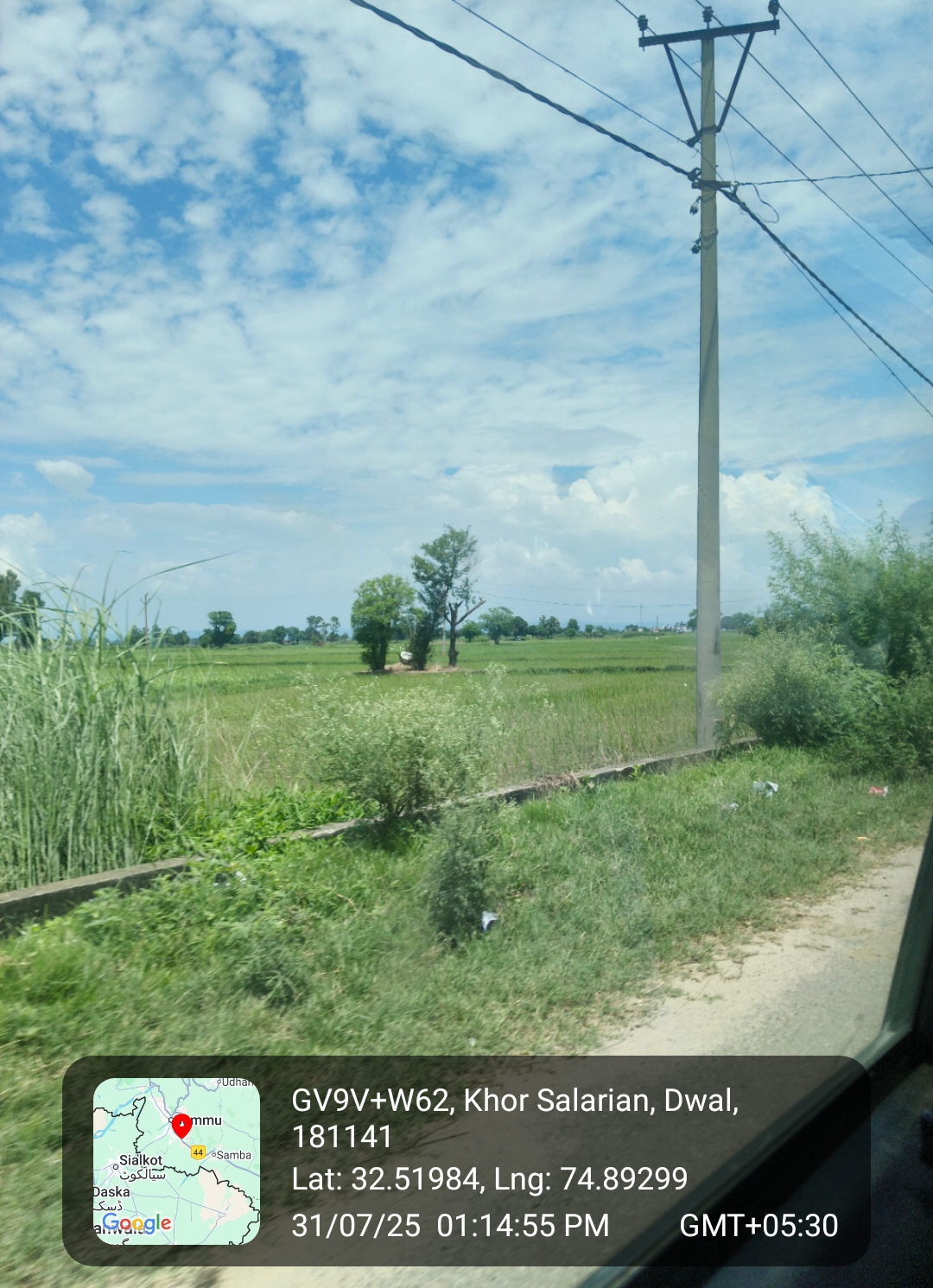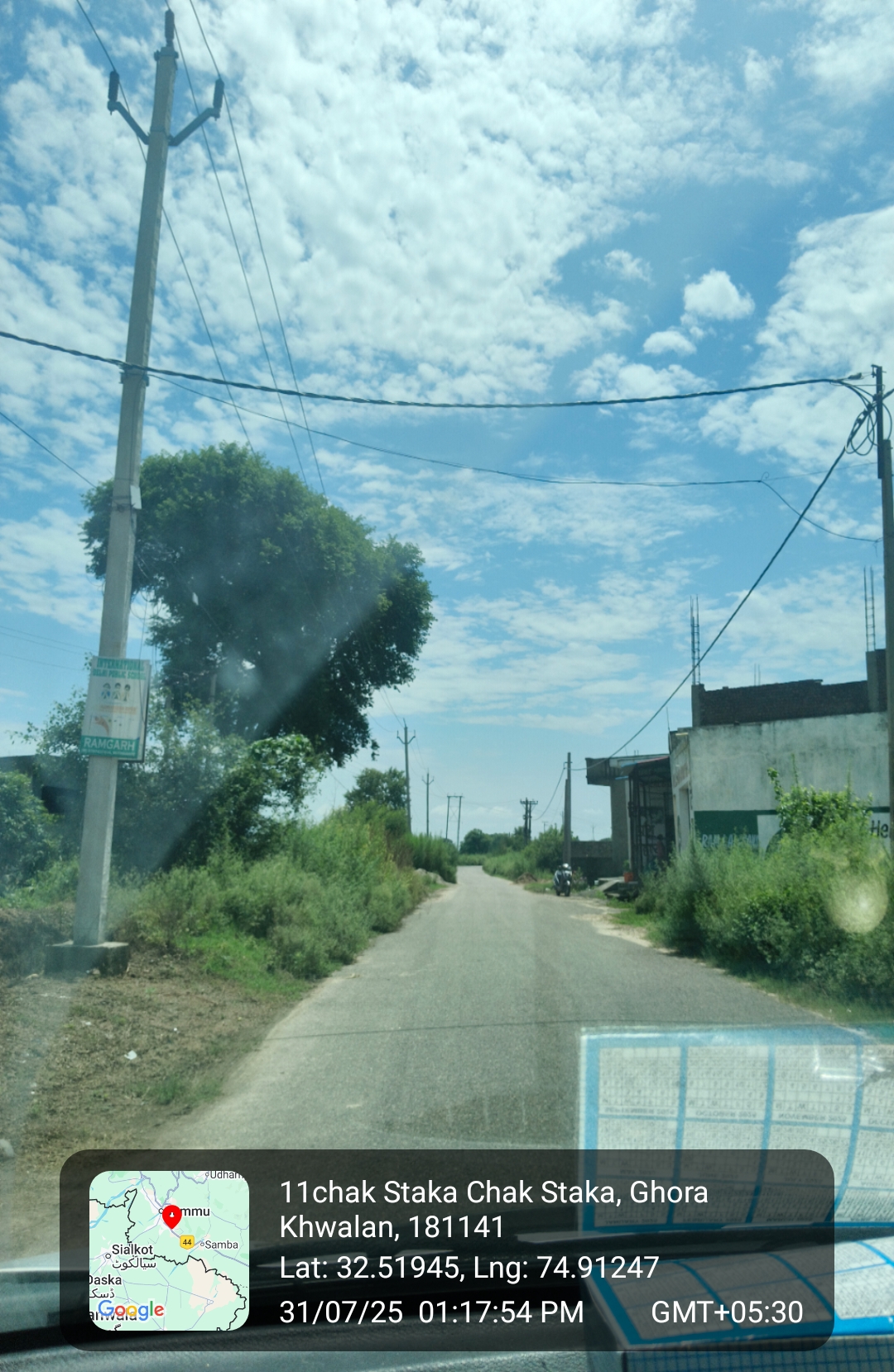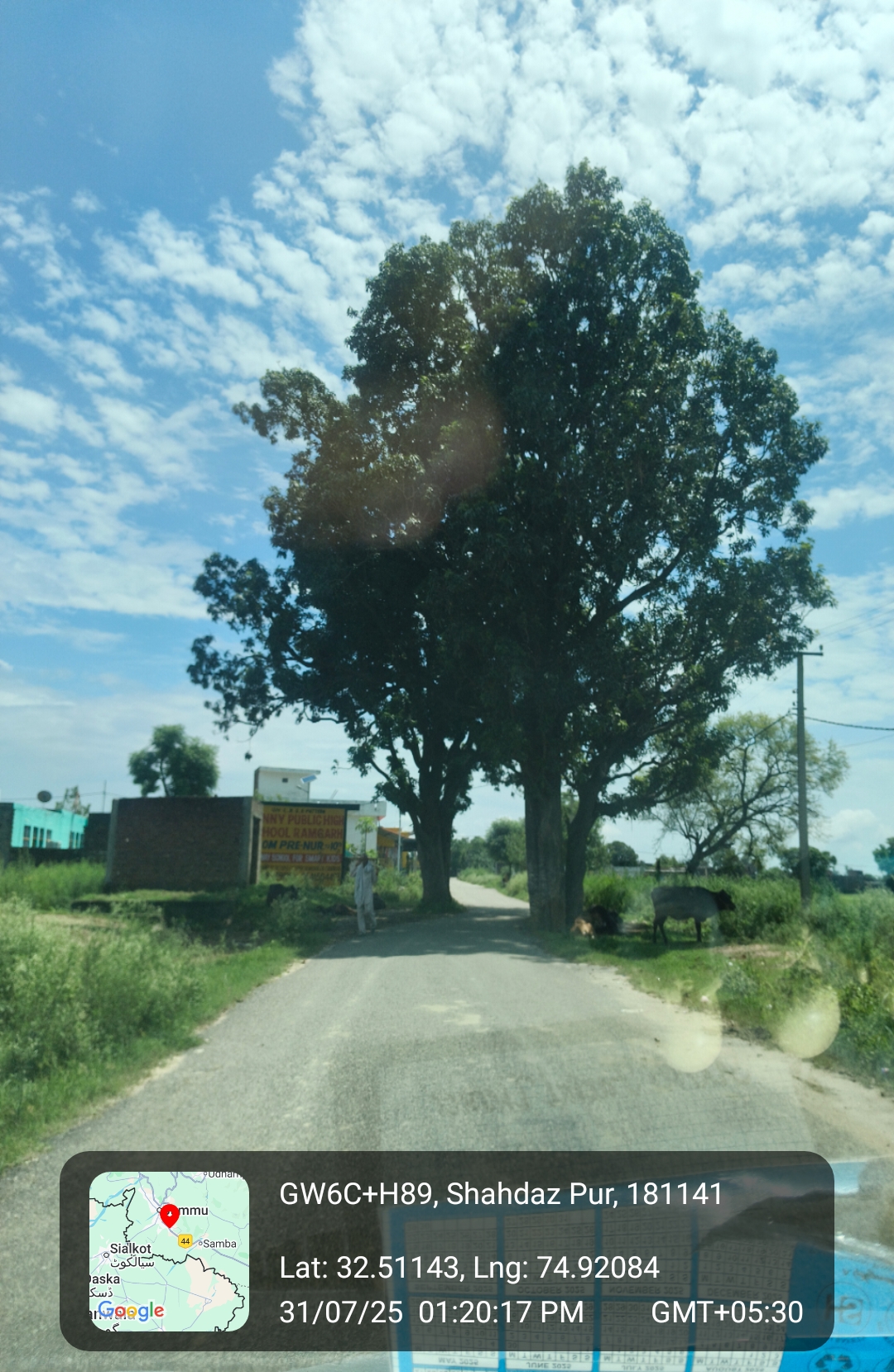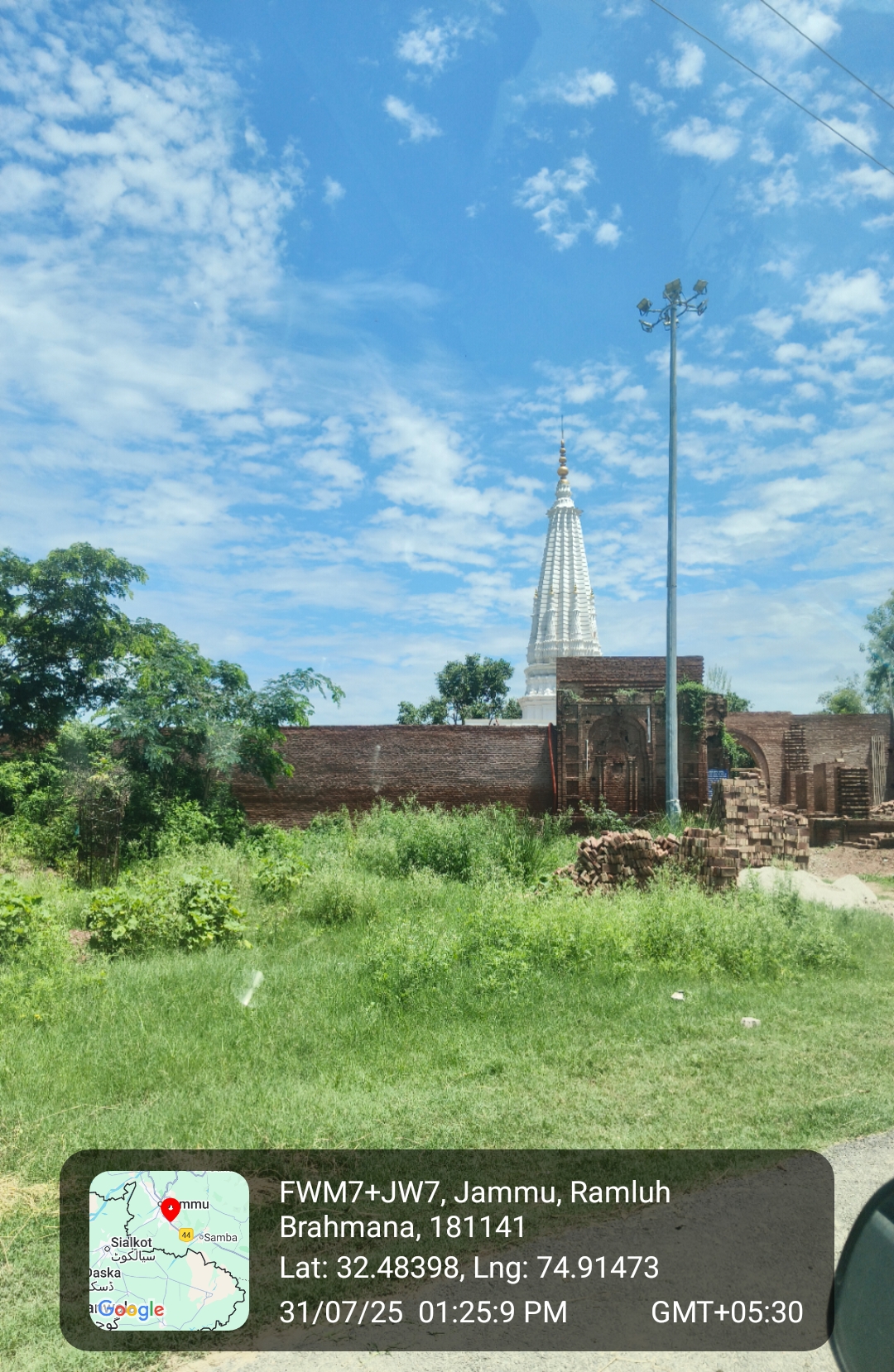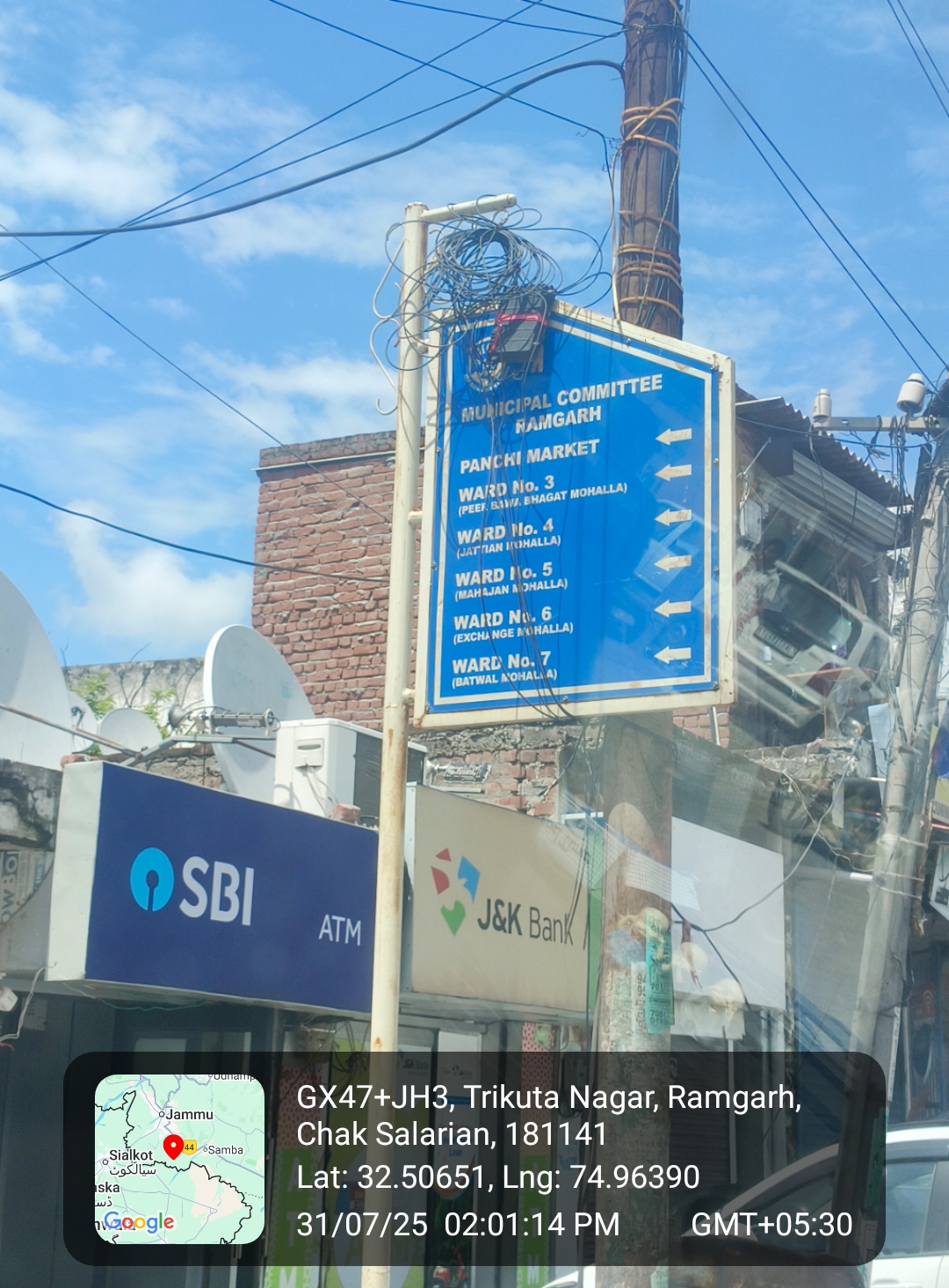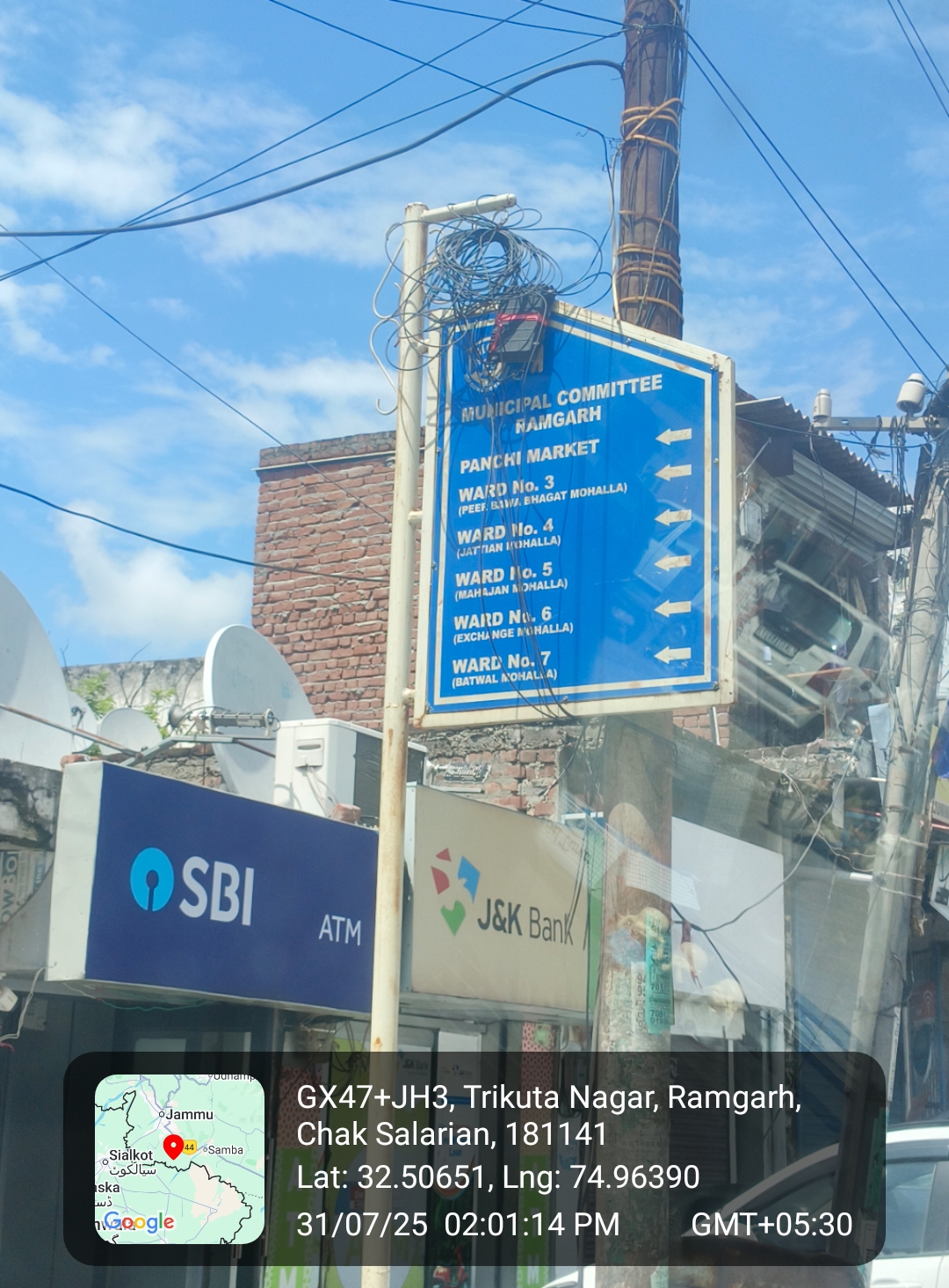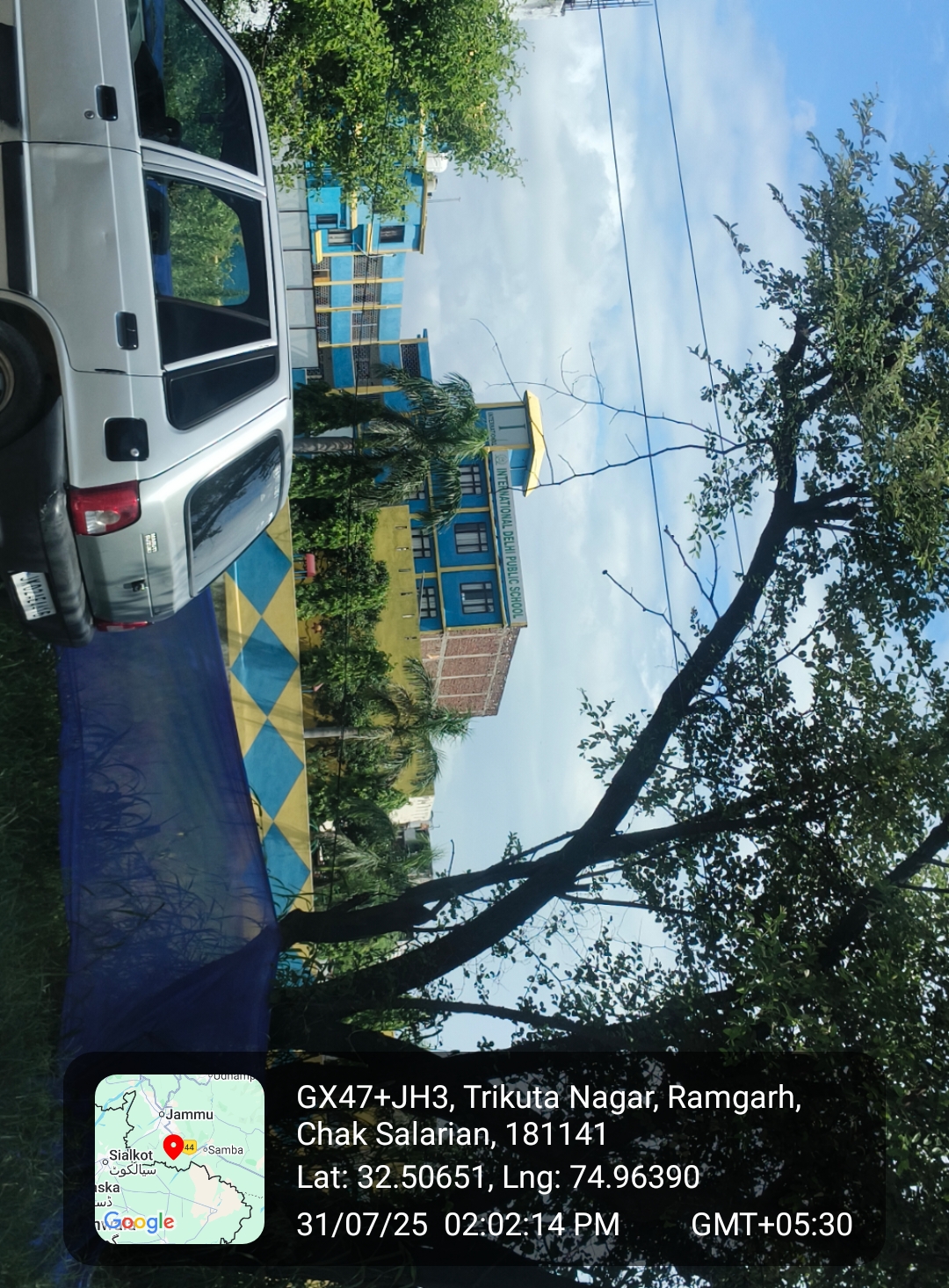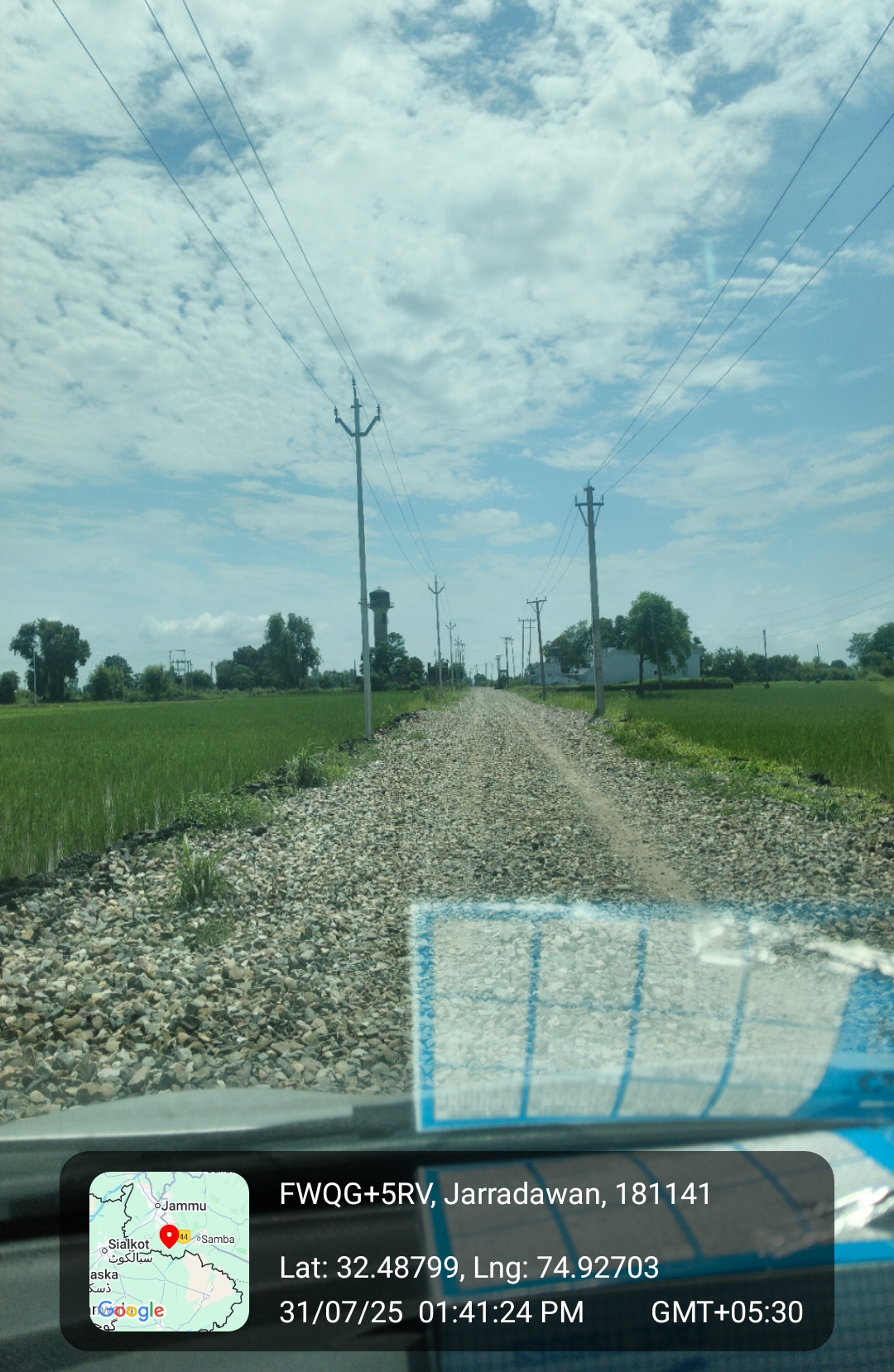Description
Introduction to Ramgarh (Samba District)
Ramgarh is a vibrant border–belt town and surrounding cluster of villages in the Samba district of Jammu & Kashmir. Set on the Jammu–plains near the Basantar river, it serves as a local hub for farm trade, small services, and cross-tehsil connectivity. Life here moves at a thoughtful pace: mornings open with temple bells and tea-shops, days are anchored by fields and markets, and evenings gather on chaupals and playground edges.
Population and Urbanization
Ramgarh has grown from a modest agrarian settlement into a small urbanizing node. The core bazaar stretches along the main road with grocery shops, hardware stores, pharmacies, and seed/fertilizer outlets. Narrow lanes branch into mohallas lined with brick homes, new RCC roofs, and courtyard kitchens. You’ll find reliable road links, expanding mobile/data coverage, primary healthcare, and a mix of government and private schools that pull students from nearby hamlets.
Cultural Heritage and Community
The social fabric blends Dogra traditions with influences from border-area routines—early starts, long field hours, and strong kinship networks. Temples host seasonal fairs; local gurudwaras welcome travelers; and community halls double as venues for marriages, kirtans, and panchayat meetings. Respect for elders, hospitality for guests, and a culture of collective help (from harvesting to weddings) remain everyday norms.
Historical Glimpse
Local narratives tie Ramgarh’s past to old trade tracks and defense posts along the plains toward the international border. Oral histories recall the Basantar sector’s strategic significance and the resilience of families during periods of cross-border tension. Memorial stones, school walls with names of martyrs, and annual patriotic programs keep this memory alive for the younger generation.
Principal Attractions: Natural Setting
Basantar Side & Fields: The countryside around Ramgarh opens into mustard, wheat, and paddy fields, bordered by kikar and shisham. Early winter brings yellow mustard blooms; late monsoon paints paddy a deep green. Small canals and seasonal streams attract kingfishers and herons, making morning walks surprisingly scenic.
Principal Attractions: Sites and Strolls
Local Temples & Gurudwaras: Modest but heartfelt architecture, with festive lighting during Navratri and Gurpurab.
Village Ponds (Tals): Traditional water bodies where children learn to fish and elders gather at dusk.
Weekly Haat: A lively market day for fresh vegetables, tools, fabrics, and farm inputs—good for people-watching and snacks.
Best Time to Visit
October to March feels most comfortable. Dussehra and Diwali brighten neighborhoods with decorations, while winter weddings fill lanes with bands, dhols, and aroma of festive cooking. Post-monsoon (September–October) fields look their best for photography and unhurried drives.
Gastronomy: Local Flavours
Expect hearty Dogra plates—rajma-chawal, madra, kaladi (local cheese, pan-seared), and kulcha-chhole at tea stalls. Winter breakfasts favor makki ki roti with white butter and sarson ka saag; weddings serve khichdi or pulao alongside seasonal sabzis and pickles. Sweets lean toward patisa, balushahi, and homemade kheer.
Lifestyle and Values
Daily life orbits around farms, schools, shops, and service in the armed forces or paramilitary. Evenings are for volleyball on the school ground, gossip at the barbershop, and community meetings near the panchayat ghar. Weddings, langars, and collective drives for cleanliness or repairs are routine, not exceptions.
Economy: Occupations and Small Enterprise
Agriculture (wheat, paddy, mustard), dairying, and small horticulture lead the way. Many families run micro-businesses—tractor rentals, repair shops, kirana, tailoring, mobile-service counters, and agri-input stores. A steady share of youth pursue defense services, police, and teaching, while others commute to Samba/Jammu for private jobs.
Education and Upskilling
Ramgarh and its surrounding villages host government primary and middle schools, a higher-secondary option within reachable distance, and several private tuitions/coaching rooms above shops. English-spoken classes, basic computer labs, and vocational add-ons (like tally, driving, or electrician skills) are increasingly common, often supported by local initiatives.
Health and Veterinary Services
A Primary Health Centre/Sub-Centre anchors first-line care—immunizations, maternal services, and basic diagnostics—supported by private clinics and medical stores in the bazaar. Nearby blocks offer referral options. Livestock care is covered by a veterinary sub-centre or on-call para-vets, crucial for dairying households.
Arts, Culture, and Festive Life
Ram Leela performances, folk songs at weddings, and school cultural days keep stages busy. On festival nights, dandiya and bhajans share space with DJ-mixes. Patriotic events on national days—flag hoisting, parades, and student skits—are well attended, reflecting both tradition and a service-minded ethos.
Sports and Youth Spaces
School grounds and open plots double as volleyball, cricket, and kabaddi arenas. Friendly village leagues and block-level meets keep weekends lively. Gyms with basic equipment are popping up along the main road, and morning running groups are a familiar sight in winter fog.
Biodiversity: Flora and Fauna
Hedgerows shelter peacocks, parrots, bee-eaters, and lapwings; orchards attract bulbuls; canals draw egrets and pond herons. Common trees include kikar, ber, neem, banyan, and peepal. After the rains, wildflowers appear along embankments, and you’ll spot bee boxes near mustard fields during bloom.
Connectivity and Access
Ramgarh links by metalled roads to Samba, Vijaypur, and Jammu (NH-44 corridor). Shared autos, local buses, and school vans handle daily movement; two-wheelers dominate short hops to markets and fields. The nearest rail access is via stations on the Jammu–Pathankot section, while Jammu city provides inter-state buses and the airport.
Public Services and Civic Life
Panchayat offices coordinate welfare schemes, sanitation drives, water-supply schedules, and lane repairs. Self-help groups (especially of women) manage thrift and small enterprises. During exams or recruitment drives, community halls host help desks and guidance sessions led by local teachers and alumni.
Safety, Resilience, and Community Spirit
Border proximity has taught families to stay prepared and calm. Evacuation rehearsals, respect for advisories, and quick mutual aid are part of the local muscle memory. In tough times—flooded lanes, crop loss, or health emergencies—neighbors close ranks fast.
Quick Snapshot (For Your Microsite)
-
Location: Ramgarh, Samba district, J&K (plains near the Basantar sector)
-
Essence: Agrarian heartland with a service-minded, defense-oriented youth
-
See & Do: Fields and canals at sunrise, weekly haat, temple circuits, festival nights
-
Taste: Rajma-chawal, kaladi, sarson-saag with makki roti, khichdi on special days
-
When to Visit: Oct–Mar; festive peaks around Dussehra–Diwali and winter weddings
-
Getting There: Road links to Samba/Vijaypur/Jammu; nearest rail on Jammu–Pathankot line
Photos
Location Map
Contact Information
| Address |
ramgarh, sambha district |
| Phone Number |
0191-2520448, 2520428. |
| Email Address | |
| Website | https://samba.gov.in/public-utility/municipal-committee-ramgarh/ |

